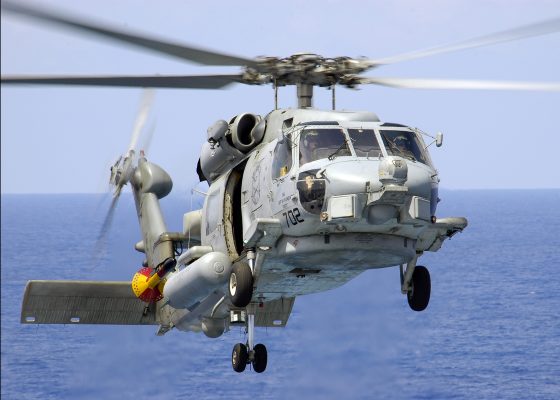
New Delhi: The final government approval for US$2.6 billion deal for military helicopters from US defence firm Lockheed Martin is expected soon ahead of the visit of US President Donald Trump to India, sources said.
Prime Minister Narendra Modi’s government is going all out to reaffirm strategic ties with the US which have been buffeted by sharp differences over trade to counter China.
The Cabinet Committee on Security (CCS) is expected to clear the purchase of 24 MH-60R Seahawk helicopters for the Indian Navy in the next two weeks, sources said.
“It’s a government-to-government deal, it is close,” industry sources said.
Meanwhile, both countries are separately working on a limited trade agreement ahead of the Trump visit, after earlier imposing tit-for-tat tariffs on each other’s imports.
Trump has called India the “tariff king of the world” but the Modi government has been trying to address some of his concerns.
Analysts referred to large-scale US arms purchases, from surveillance planes to Apache and Chinook helicopters, as proof of India’s willingness to tighten strategic ties.
The multirole helicopters will be equipped with Hellfire missiles and are meant to help the Indian Navy track submarines in the Indian Ocean, where China is expanding its presence.
Many of India’s warships are without any helicopters because of years of under-funding, and the Navy had sought their acquisition as a top priority.
The US State Department approved the sale of the choppers to India last year along with radars, torpedoes and 10 AGM-114 Hellfire missiles.
The clearance came after the Trump administration rolled out a new “Buy American” plan in 2018 that had relaxed restrictions on sales, saying it would bolster the American defence industry and create jobs at home.
The United States has also offered India the armed version of Guardian drones that were originally authorised for sale as unarmed for surveillance purposes, the first such approval for a country outside the NATO alliance.
India plans to buy 30 of these unmanned aircraft for surveillance of the Indian Ocean, at a cost estimated to be about US$2.5 billion, from General Atomics.
However, a defence official said the deal is unlikely immediately because of lack of funds.









